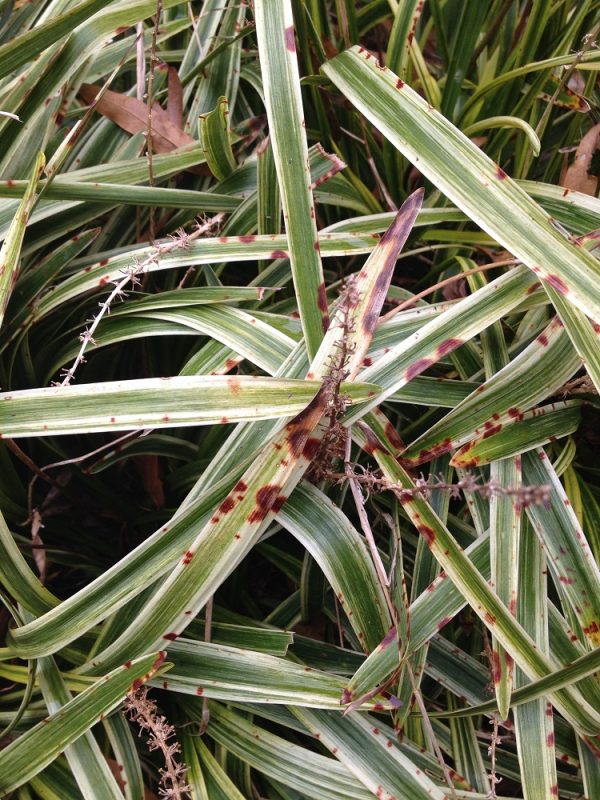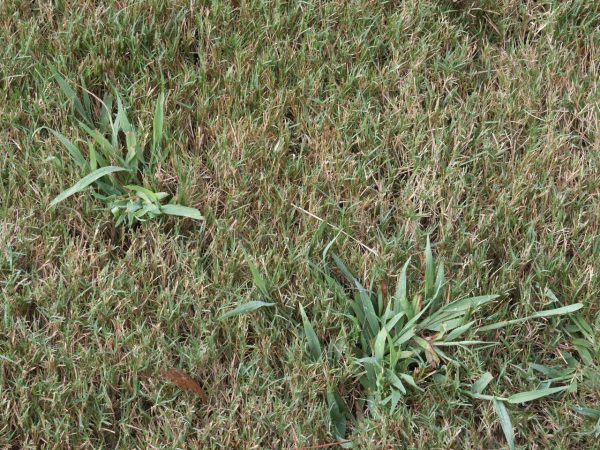Ficus
Q: I just moved my ficus to a bigger pot and all the leaves have fallen off except four. Is there anything I should do? I have not applied any fertilizer to the tree in a while.
A: Weeping ficus (Ficus benjamina) is famous for going into a plant pout whenever conditions around it change. Taking it from the garden center to your home? All the leaves fall off. Moving it from the patio to your bay window? All the leaves fall off. Changing the conditions around its roots? You guessed it – – all the leaves fall off.
Fortunately, a ficus soon recovers from its grumpiness if it was healthy to begin with. Keep yours in the brightest light possible and it will probably re-leaf itself in a month. Fertilize with houseplant fertilizer once it has new leaves.
FICUS TREES – LOSS OF LEAVES
Nov. 16, 1996
Q: I have just purchased a ficus tree. I hear people talk about how they sometimes lose all of their leaves. Is there a way to avoid this?
A: Ficus trees typically lose leaves when they are moved from one light environment to another. In a nursery, the bright light supports a dense and attractive cover of foliage. When you move it to your home, light levels might be only ten percent of what the ficus had been enjoying. Put your ficus in the brightest spot you can find and leave it there. Don’t be tempted to take it outdoors in the summer – you’ll be tempting leaf drop when you take it out and again when you bring it indoors. Your ficus may lose a few leaves but it will gradually adapt to the conditions indoors if you leave it alone. Let your fingers tell you when to water. If the top one inch of soil is dry, it’s time to water heavily and then let the soil become dry again. Contrary to the advertisements, your ficus will be happier if you use a houseplant fertilizer only three times per year, in April, June and August.*
Ficus- ‘crying’
Q: My ficus tree is crying! Every day I notice drops of water or sap on the tile floor underneath the plant. I first thought it was insect honeydew but I can’t find mealybugs or scale anywhere on the tree. I do see water drops at the tips of some leaves. Why is this happening?
A: If you eliminate the presence of pests that secrete sticky liquids, I think the only answer is that your ficus is guttating. Plant leaves lose moisture primarily through transpiration. Water vapor evaporates through holes on the leaf surface called stomata. Water comes to the stomata from the roots through the plant’s stem and branches. It’s important that water constantly moves in the plant’s vascular system because it contains the carbohydrates and hormones that keep a plant healthy.
Transpiration is one way by which plants lose water but it is not the only way. The edge of some leaves contains special cells called hydathodes. When humidity is high and there is too much water in a plant’s system, the hydathodes excrete water as well. The water contains a small amount of plant sugars and salts. When enough of this water accumulates on a leaf, it drops from the tip, onto your floor. Make sure to check the soil for dryness before you water each time. The guttated water won’t hurt tile but I’d wipe it up before it gets sticky.
Q: We have a ficus that has grown into an 8′ tree. Every year we put it out on the deck and bring it in about now. This year it has lost many, many leaves. It has lost green, healthy leaves. Any advice?
A: Almost everyone that has ever purchased a ficus tree has had to drag out the broom to clean up the leaves that have dropped. The next step seems to be that the plant owner tries to water more, water less, repot, move it into more light or less light and the plant just gets confused. Plants don’t have brains but do have expectations. Generally, when you ask a plant professional “Why” this happens you’ll receive a short but simple answer – “It’s acclimating”. This is true, but a more complete answer will help you understand what is happening. Acclimating is normally pigeon holed as a matter of going from high light to lower light or vice-versa. With Ficus benjamina you need to know about it’s background. Ficus is truly a creature of habit. In its natural habitat, the ficus is a very versatile plant as far as light goes. In the full sun it will have a thick canopy of leaves. But, in the dense forest it will grow very open with fewer leaves and thin weeping branches. This explains some of the leaf loss going from a higher light level to a lower light level. This is why every time you move that ficus from one room to another or turn it around you lose leaves. Just as birds migrate south for the winter season, the benjamina comes from an area that has very distinct seasons. The exception is that the seasons are wet and dry. How does a benjamina prepare for the dry season? It sheds its leaves. It reduces the amount of leaves to survive because it will not have enough water to support them during the dry season. When the rains return, new growth comes out and the canopy returns. The survival mechanism for benjamina is leaf drop. It doesn’t like changes, it is a creature of habit. Once you have decided where you are going to place your ficus (the more light the better), give it the same lighting, same amount of water and stay on the same schedule. So–going from outdoor (this summer, humid and rather wet) to the dry indoors–less light, much less humidity–causes the leaf drop. Leave it alone, and it should recover. Don’t fertilize or overwater and it should make it through the winter.














